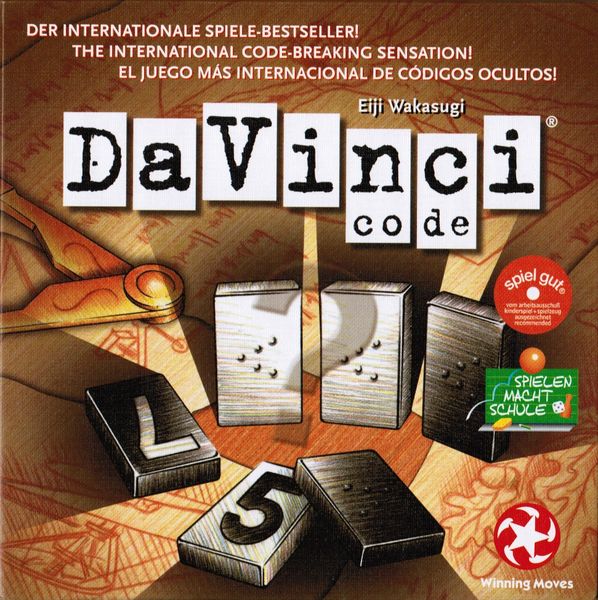Da Vinci Code (2002) Board Game
The Da Vinci Code board game was released in 2002 by Användbart Litet Företag. It is designed for 2-4 players and has a runtime of about 15 minutes. The game is based on the popular novel by Dan Brown and incorporates elements of deduction and strategy.
Game Components of Da Vinci Code
How To Setup Da Vinci Code
To set up the game, players first mix the tiles face down and then draw a certain number of tiles based on the number of players. For 2-3 players, each player draws 4 tiles, and for 4 players, each player draws 3 tiles. The tiles must be arranged in numeric order, with the blank side facing the opponents. If two tiles have the same number, the black tile is considered the “lower” tile. Players ensure their tiles are stood up in a wall, keeping the numbers hidden from their opponents.
Gameplay Mechanics and Game Objective
– Draw a tile from the face-down supply.
– Guess a number in an opponent’s code.
– If correct, the opponent reveals the tile. If incorrect, reveal the drawn tile and insert it into your own code in the correct position.
Player Experience
The game is designed for 2 to 4 players and lasts about 5 to 15 minutes. It involves a combination of reasoning, memory, and a bit of luck. Players must use their detective skills to infer the numbers on their opponents’ tiles based on the information revealed during the game. The game is simple enough for children and early to mid-teens but can also be enjoyed by adults looking for a light, strategic game.
Pros
Cons
Personal Thoughts on Da Vinci Code
The Da Vinci Code board game is perfect for families, children, and those looking for a light, fun game that doesn’t require a significant time commitment. While it may not offer the depth that hardcore gamers seek, it provides an enjoyable and engaging experience that tests your deductive skills. It’s an excellent addition to any game collection for those who appreciate simple, yet strategic gameplay.
We are supported by our audience. When you purchase through links on our site, we may earn an affiliate commission, at no extra cost for you. Learn more.

